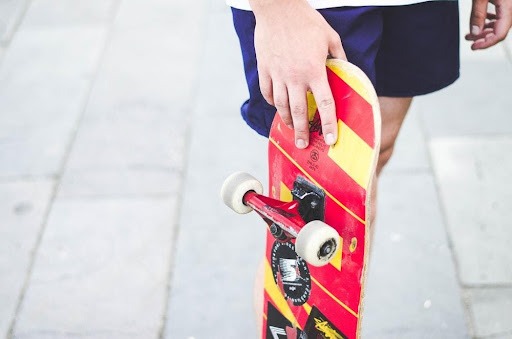https://unsplash.com/photos/VtzqmX2pLV8
Your skateboard is only as good as its individual components. That’s why it’s important to ensure that your board is built up of durable, high-quality parts, especially if you’re building a custom skateboard instead of buying a complete one.
When you think of the individual components of a skateboard, you probably think of equipment such as the deck, wheels, grip tape, or maybe even the trucks. But where do bearings come in and what role do they play? How do you know if you’re buying the ones you need? With hundreds of brands and varieties to choose from, the process of buying skateboard bearings can be confusing.
In this guide, we’re going to dive into skateboard bearings, what they do, the most common variations, and how to choose the bearings that are right for you and your set up. Whether you’re getting your first set of bearings for your first custom build or just want to brush up on some helpful knowledge, we’ve got you covered.
What are skateboard bearings?
Skateboard bearings are round metal pieces that mount to your axle, allowing your wheels to roll. Each skateboard wheel has two bearings, each of which consists of five parts: the shield, inner ring, balls, retainer, and outer ring.
Having the right bearing can make or break your skating experience, from affecting your ability to generate speed to ensuring a smooth ride.
Most bearings are standardized, meaning they come in the same size and will fit most wheels and trucks. But that doesn’t mean you can just pick and choose any set of bearings you want without taking other factors into consideration.
What are the different types of skateboard bearings?
While all wheel and bearing brands are compatible and equal in size, that doesn’t mean that any brand or pair of brands is the ideal choice or combination for you. Additionally, just because all bearings are the same size, not all are created equal or were made to pull the same weight.
Skateboard bearings may be differentiated by rating or type of material.
ABEC Ratings
Bearings often have an ABEC rating that determines its capacity and precision. The ABEC Scale, the industry accepted standard for the tolerances of ball bearings, was developed by the Annular Bearing Engineering Community (ABEC) of the American Bearing Manufacturers’ Association.
Ratings depend on purpose, with scale ratings consisting only of odd numbers and ranging from ABEC 1 to ABEC 9. Ratings don’t necessarily indicate whether the bearing is good or bad, but rather its dimensional tolerance. The higher the rating, the tighter the bearing’s tolerances should be.
Skateboards don’t need the most precise bearings, and the ABEC rating scale isn’t optimized for relevant skating concerns anyways. Still, it’s helpful to know the general parameters of each rating.
- ABEC 1. The most basic, crude, least precise option available. Also, the cheapest.
- ABEC 3. Most cheap completes will come equipped with ABEC 3 bearings.
- ABEC 5. The most common bearing used for skateboards, offering reasonable speed for a reasonable price.
- ABEC 7. Things start to get fast and expensive around ABEC 7.
- ABEC 9. Very fast and very expensive. Not commonly recommended.
Steel Bearings
Steel bearings are the industry standard and the most economical option. The higher grade the steel, the faster and more durable the bearing has the potential to be. Steel bearings are vulnerable to rusting, so it’s important to keep them well-oiled with lubrication.
Ceramic Bearings
Ceramic tends to be lighter and stronger than steel, giving in less under pressure. The heat resistant nature creates less friction at higher speeds and when compared to steel bearings, does not rust when exposed to moisture. Despite their durability, ceramic can break under sustained high impact. Ceramic bearings are ideal for lower impact skating and cruising, and not recommended for vertical or obstacle skating.
Titanium Bearings
Out of the three materials listed here, titanium bearings are probably the most rust and corrosion resistant. These bearings are quite similar to their steel counterparts, requiring lubrication to keep excess friction at bay.
Which Skateboard Bearings Are Right For Me?
Now that you’re familiar with the different types of bearings on the market, it’s time to assess which one works best for your situation.
The first thing to take into consideration is your experience level. If you’re just starting out, there’s really no need to dive in and buy something extremely high end that generates an insane amount of speed.
Next, you’ve got to consider your riding style. Are you more of a commuter and casual cruiser? Or are you more inclined to skate stair sets? Knowing the type of skating you’ll be doing most of the time can help you narrow down the types of material your set should be made of.
We hope this guide has been helpful in deciphering the different types of skateboard bearings out there and figuring out which kind might be right for you! As with every piece of equipment, maintenance is key, so be sure to brush up on how to maintain and clean your bearings.








